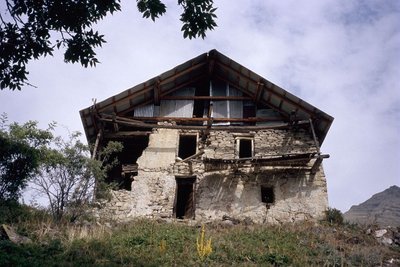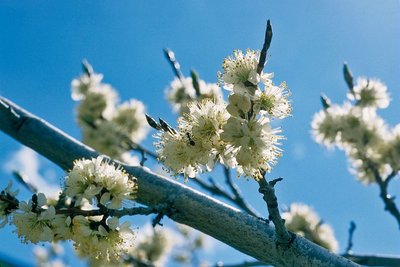
RANDOLAND: Freissinières
church, communal oven, water fountains This tour is the perfect opportunity to explore the territory and history of Freissinières, while enjoying exceptional natural scenery. Pick up a Randoland clue sheet to answer the riddles and observe the heritage features along the way .
Description
The route starts at the Place du Souvenir, near the church of Saint Marie-Madeleine. First, take a look at the war memorial and water fountain on the square, for the answer to the first riddle. Go downhill to the church of Sainte Marie-Madeleine and then back to the Place du Souvenir.
- After the water fountain, turn left and continue straight on to the next water fountain opposite the Relais des Vaudois hotel. Go into the car park.
- Head down to the left towards the Chemin d'Alfred, but do not follow it. Cross the stream La Petite Beyère and go along the fence. Cross the irrigation canal (Grande Beyère).
- Turn left. Follow the canal side until you come to the water fountain. The mill is opposite. You might find it helpful to look inside through the back window. Then go across the central reservation to look at the communal oven.
- Go to the right of the oven and go upstream following the bank of the small stream. Continue on the raised path towards the Biaysse river and turn left to read the "La maison engloutie" panel, about a sunken house, on the Chemin d'Alfred. Continue to follow the river until you come to the next small water course, the Jaimes, which you follow upstream. Cross over the first bridge, heading towards some garages and carry on up towards the Valley Centre ("Maison de la Vallée").
- Opposite the Valley Centre, go right. Carry on until you come to the crossroads and turn left into Les Meyries. Carry on up the road (or alternatively you can take the narrow path running uphill on the left, between the stream and the waste bin shelter). Further up, just before Ville, at the intersection between the path and the road, keep an eye out for the wooden wayside cross. Carry on uphill back to the starting point of the trail.
- Departure : Place du Souvenir, Town, Freissinières
- Arrival : Place du Souvenir, Town, Freissinières
- Towns crossed : Freissinières
Altimetric profile
Recommandations
To download the Randoland clue sheets, visit the Office de Tourisme Intercommunal du Pays des Écrins website.
Check weather conditions before setting off.
Rescue services contact details: Secours Montagne (Mountain Rescue): +33 (0)4 92 22 22 22 or 112
Show consideration for the work of farmers, livestock keepers and owners
Close all gates behind you
Take your litter home
Do not take shortcuts across pastureland
Information desks
23 Avenue de la République, 05120 L'Argentière-La Bessée
Vallouise Park house
, 05290 Vallouise
Information, documentation, models, exhibitions, screenings, product sales and works of the Park. Guided tours for school, reservation required. The new Park House opened in Vallouise since June 1, and offers visitors an interactive permanent exhibition inviting to explore the area and its heritage. A temporary exhibition space will allow a renewed offer. Finally, the device is completed by an audiovisual room to organize screenings and conferences Free admission. All animations of the Park are free unless otherwise stated.
Transport
Public transport >> www.pacamobilite.fr
Consider car-sharing >> www.blablacar.fr
For more information, ask at the Tourist Information Office nearest to the trail starting point.
Access and parking
11.5 km from L'Argentière-La Bessée, take the N94.
Parking :
5 points of interest

La maison de Felix Neff - Manuel Meester - Parc national des Écrins  History
HistoryFélix Neff
Félix Neff was a Swiss Protestant pastor. He was responsible for the Protestant Revival in the Freissinières valley in the seventeenth century. He also set up the first education college for primary school teachers in France, in Dormillouse in 1826. He was also behind new irrigation and house-building techniques, developments which improved the everyday lives of the local people.

Prunier de Briançon - Bernard Nicollet - Parc national des Écrins  Flora
FloraHuile de marmotte - marmot oil
In times past, the inhabitants of Freissinières used oil for cooking and lighting. Walnut or almond oil was difficult to produce at this high altitude. The Briançon plum tree or marmottier, however, can withstand the mountain conditions, and the yellow fruits of this tree contain kernels. These kernels were pressed in mills to produce an oil with medicinal virtues: marmot oil. .

Pétasite hybride en fruit - Mireille Coulon - Parc national des Écrins  Flora
FloraThe petasites hybridus or butterbur
On the banks of the stream there is a plant with very broad leaves: the petasites hybridus or butterbur. In Ancient Greek, the petasos was a round felt hat. Nobody knows whether the devil wears this hat, but the plant is certainly used as a herbal remedy. Common in the lowlands, it is generally quite scarce in the mountains, although other species of petasites do grow at higher altitude. In any event, it makes a great hat!

Freissinières - Office de tourisme Pays des Écrins  History
HistoryFreissinières
The name Freissinières comes from the old word freissinière meaning "black ash". This municipality, which extends as far as the Col des Terres Blanches and the Col de Freissinières, both of which overlook the Champsaur valley, is made up of thirteen hamlets, although none of them are called Freissinières! Archaeological excavations carried out twenty years ago show that sites at high altitude (such as Faravel) were occupied on a seasonal basis from the retreat of the glaciers 12,000 years ago (Upper Palaeolithic period) and that this occupation continued after that.

L'église Sainte Marie-Madeleine - Office de tourisme Pays des Écrins  Vernacular heritage
Vernacular heritageThe church of Sainte Marie-Madeleine
The church of Sainte Marie-Madeleine was built in the seventeenth century. It is thought to be a former Protestant church which escaped destruction in 1684 when Louis XIV was leading an anti-Protestant drive. The Protestant church is then thought to have undergone works to convert it into a Catholic church.
Accessibility
- Emergency number :
- 114
Source

Report a problem or an error
If you have found an error on this page or if you have noticed any problems during your hike, please report them to us here:


